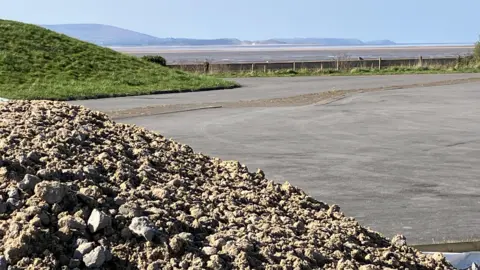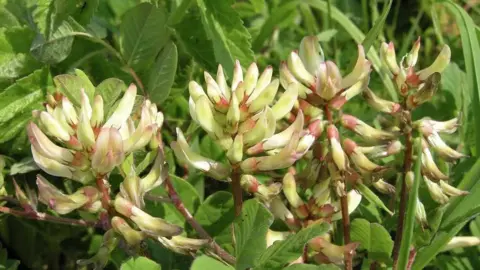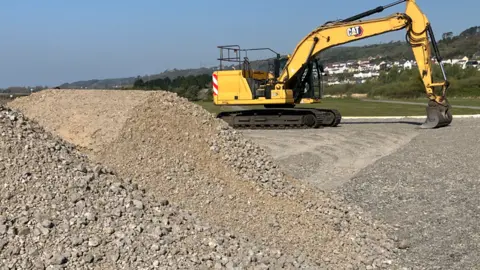Slag heaps could be Wales' nature hero, ecologist says
 BBC
BBCSlag from the steel industry could help save some of Wales' most rare plants, according to an ecologist.
The material, regarded as waste, has been described as a potential "game-changer" when it comes to boosting biodiversity.
Barry Stewart, an ecologist from Swansea, has observed how slag heaps have self-seeded with plants which are on the edge of extinction in Wales.
He is now working with Carmarthenshire council to create a test bed where he hopes to grow some plants like wild liquorice, currently so rare it can only be found at two sites in the whole of Wales.
A slag heap is a hill or area of refuse from a mine or industrial site.
Mr Stewart has been recording plants for 30 years and gradually realised that wherever slag was present, wild flowers did well.
It was a site in Baglan, Neath Port Talbot, which led him to realise the value of slag.
At the right time of year the slag fields there are a mass of colour, he said, with plants which are on the edge of extinction in Wales.
"My university lecturer and I have spent many hours recording plants and saying this site is amazing, but not really paying too much thought as to what the material under the plants was," he said.
"But obviously the more we've studied it, we realised it's an amazing substance which supports this amazing assemblage of plants."
Mr Stewart said they had recorded more than 470 species at the site, including wild liquorice, Nottingham catchfly and various orchids.
"It's an ever-growing list," he said.
Slag is not a natural substance, but formed as part of steelmaking and sometimes used in the construction industry.
"Chemically it mimics limestone and, when you've got sand added to it, it basically caters for plants that you would normally find on sand dunes and on calcareous grasslands, which happen to be our two most species-rich habitats in the UK," said Mr Stewart.
"So you've got this beautiful sort of combination, this sort of synergistic effect, which means that slag actually has a higher biodiversity rating than these natural habitats. It's a totally artificial habitat, but it's incredibly diverse."
Up close, slag heaps look like lumps of soft stone, pitted with small holes.
Despite it being a man-made by-product, Mr Stewart said there was no risk of pollution.
"It's not toxic in any way," he said.
"It does alter the chemistry of the soil, which is why farmers use it to improve their farm fields.
"They basically crush slag down to a very fine powder and apply it to the fields to improve the agricultural yields from their farmland."

He said the only place its use would be inadvisable was "on a species-rich acid grassland" because it elevates the land's pH, or how acidic or alkaline it is, but added it was overall "very good for the environment".
Mr Stewart's test project with Carmarthenshire council is taking place at a site once part of the old Duport steelworks in Llanelli.
He hopes to prove that spreading the material mixed with sand will encourage wild flowers back to an area which has been reclaimed as grassland.

Paul Aubrey, conservation and nature reserves manager, is managing the project and said the team was "really hopeful that it will replicate open mosaic habitat".
"In a few years time, this will be awash with native wildflowers that can be found just growing along the coastline," he said.
"This will be an area where people can come and see them close up, without fear of trampling them or damaging them."
He added the site should also be home to "a wealth of insects", with the addition of some bee hotels and benches.
Both men agreed there was no shortage of slag available, with about 500 million tonnes at sites around Wales' steelworks.
Mr Stewart firmly believes it is a "game-changer" for his work to save rare plants.
"We're constantly told, we're in a crisis, our environmental pressures are massive, we're losing important habitats, and it's very often difficult to restore those habitats," he said.
